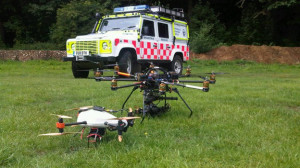
Got TweetCred? Use it To Automatically Identify Credible Tweets
What if there were a way to automatically identify credible tweets during major events like disasters? Sounds rather far-fetched, right? Think again.
The new field of Digital Information Forensics is increasingly making use of Big Data analytics and techniques from artificial intelligence like machine learning to automatically verify social media. This is how my QCRI colleague ChaTo et al. already predicted both credible and non-credible tweets generated after the Chile Earthquake (with an accuracy of 86%). Meanwhile, my colleagues Aditi, et al. from IIIT Delhi also used machine learning to automatically rank the credibility of some 35 million tweets generated during a dozen major international events such as the UK Riots and the Libya Crisis. So we teamed up with Aditi et al. to turn those academic findings into TweetCred, a free app that identifies credible tweets automatically.
We’ve just launched the very first version of TweetCred—key word being first. This means that our new app is still experimental. On the plus side, since TweetCred is powered by machine learning, it will become increasingly accurate over time as more users make use of the app and “teach” it the difference between credible and non-credible tweets. Teaching TweetCred is as simple as a click of the mouse. Take the tweet below, for example.




